
Chances are good that if you are reading this, you learned from a young age how to pee in the woods.
Now, we are about to suggest you to use a bucket, yes, even in the house. What is this world coming to?
We all use the toilet several times a day, and yet, it remains one of those subjects we tend to avoid in conversation.
Humans are even apt to beat around the bush, and not just when going to the “ladies or men’s room” out in nature. To put it politely, we say we are “going to the bathroom” or “to the loo”, when what we really mean to say is we need to use the toilet.
The toilet: a much needed – and necessary – object in any home; off-grid or on-grid, in the city or in the country.
For those who consider working with plumbing and sewage as dirty jobs, or cleaning the toilet as punishment in general, just remember where we have come from, so that we can appreciate the present and the future.
Thank goodness we have come a long way from throwing sploshing contents of chamber pots out onto the streets from upstairs dwellings!
Which brings us to the aspect of getting rid of our excrement in the nicest possible ways and sustainably, even embracing the science of creating humanure. All with the help of a compost toilet, of course.
Toilet options for life without electricity or running water
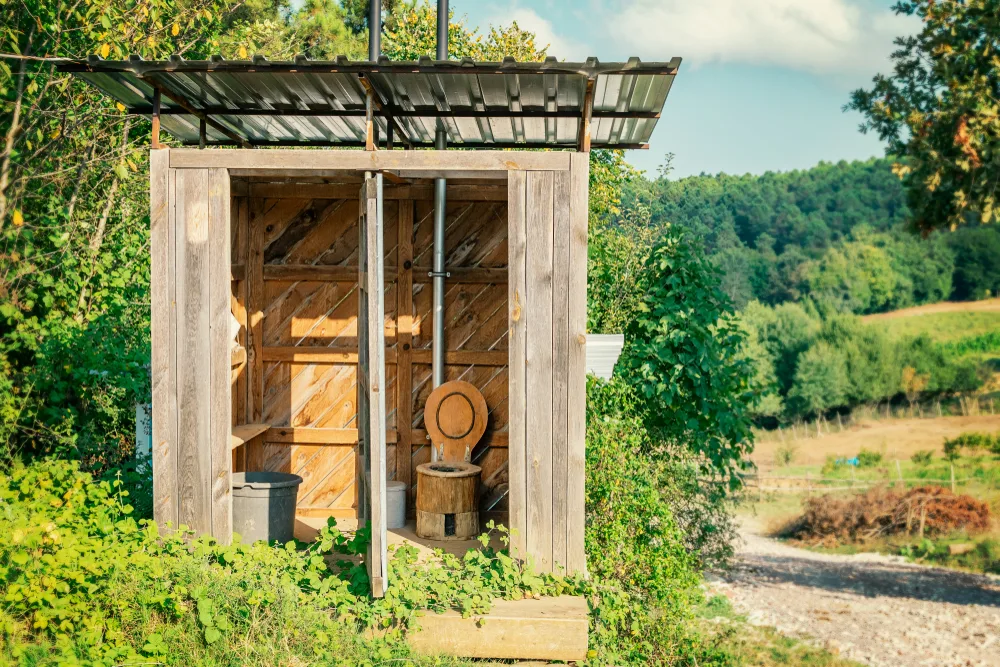
Let’s first dispel the myth that compost toilets are for people living off-grid.
That is simply not true.
Compost toilets are for anyone and everyone who wants to save a little, or a lot, of precious water. They can also help you save on your electricity bill too. For example, if you need to pump your water just to flush.
Naturally, compost toilets are particularly advantageous for those without running water or electricity, seeing as how they function very well without. In exchange, however, you will need to use man/woman-power as you are emptying buckets, hauling organic cover and creating a compost pile in your backyard.
Those living in tiny homes will agree that compost toilets without plumbing are simply the best.
Campers already know about this too. It is a far better option than digging a hole or heading to the outhouse in rubber boots, in below freezing temperatures, in the middle of a snowstorm. Trust me, it has happened more than once!
Reasons for needing/wanting a compost toilet in your home
You may not realize it yet, but compost toilets are essential for low impact living.
If living a sustainable life is one of your goals, keep reading to discover the reasons why you should consider installing a compost toilet in your home.
Compost toilets:
- consume little, or no, water
- reduce both your water and electricity bills
- work without plumbing and do not add waste to sewage or storm water drains
- eliminate the transportation of human waste (think of the challenges of a septic system)
- can be used in tight spaces where “conventional” toilet systems cannot fit
- allow you to compost your own waste, more commonly referred to as humanure
- are budget-friendly, especially if you choose the DIY route
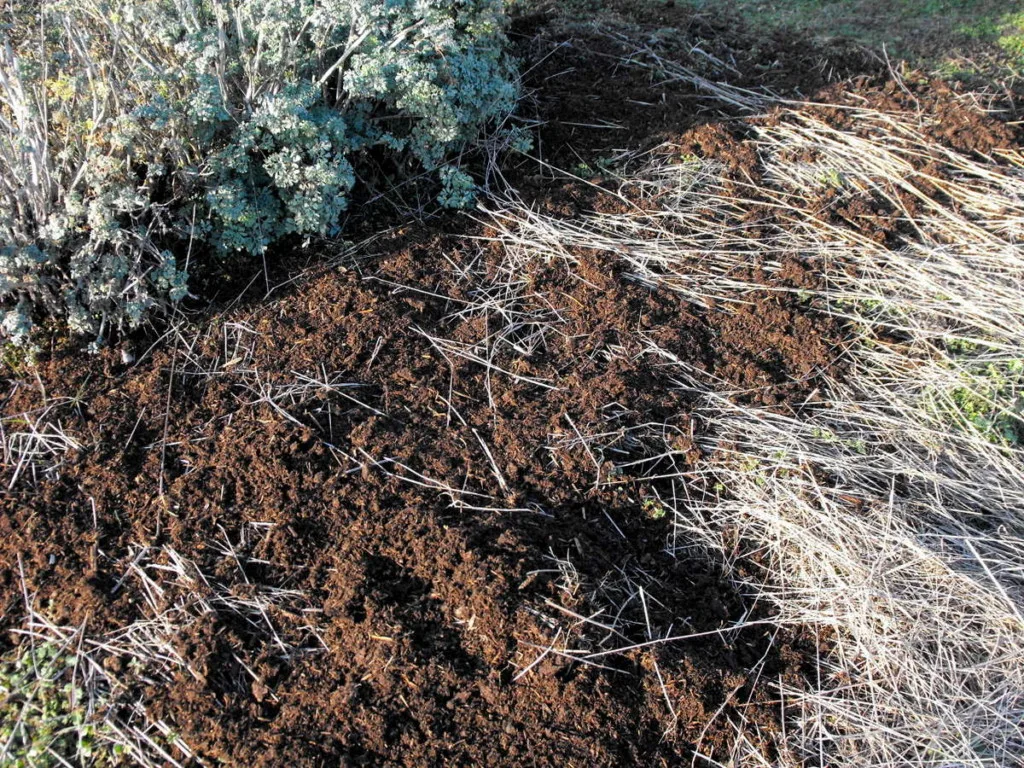
Whether you are seeking to lower your energy costs, to save energy in the first place, or you are simply off-grid and no other options are available, a compost toilet can be a savior – where you can be proud of sitting on such a sustainable throne!
From outhouses to DIY compost toilets
Before we begin the DIY compost toilet journey, let’s mention a word or two about pit latrines.
You might remember using them long ago at camp, but worldwide, nearly 1.8 billion people still utilize them on an everyday basis.
That being said, there are several ways to build an outhouse. Just as there are several reasons why you should or shouldn’t go that route.
Temperatures can be a deciding factor for digging a pit latrine, as will location, potential groundwater pollution, proper ventilation and sludge management.
But there is an easier way to go when you have to, when you invite a compost toilet into your life.
Best DIY compost toilet plans
For nearly 8 years when our family homesteaded in southern Hungary, one of the first changes we made on our property was to replace the outhouse. It was not so far from the well where we manually drew water for washing up, bucket by bucket. Our drinking water came from an artesian well a couple of miles away.
Our compost toilet system was very rudimentary, though practical and efficient. One steel bucket was placed underneath a metal frame and covered by a wooden toilet seat. Another bucket contained organic cover material (freshly scythed grass, leaves or hay, mixed in with a combination of herbs at times). While yet another steel bucket stood at the ready for when the first one was full.
And when that bucket was ready to dump into a 3-year rotational bin system, it was taken out and added to the growing pile along with our garden and kitchen scraps.
Luckily we don’t have any pictures to dissuade you. Just know it was used by our family and many a farm volunteer over the course of several years. A vast learning experience for all.
The end result was a nutrient-rich compost that was used in our vegetable garden and around our fruit trees.
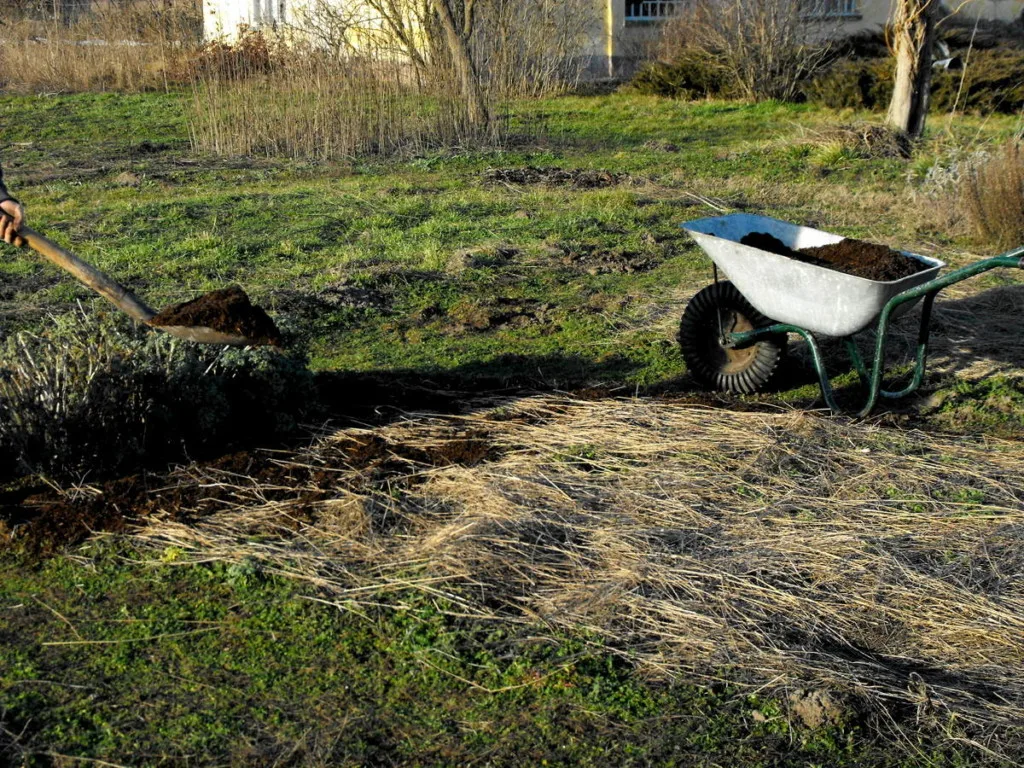
Here are some more DIY compost toilet ideas to get you started:
Forget the Flush – D.I.Y. composting bucket toilet
This is your chance to combine a compost toilet with an outhouse and reap the benefits of a safe place that is free from the perils of leaking and freezing.
You’ll need some wood, woodworking skills, screws and hinges to put it all together. Combine this along with a bucket or two, and you’ll happily find the plans uncomplicated.
Merge this with the work of Joe Jenkins and his Humanure Handbook, and you will be set for compost toilet life. With the exception of toilet paper that is.
Simple 5-gallon bucket
If you are in a rush to get started and have several 5 gallon buckets on hand, a very simple, perfunctory compost toilet can be made within minutes.
Not only is it a great way to use up materials you already have on hand, it is an opportunity to try out a compost toilet and to see if you are going to enjoy using it. The more comfortable you can make it, the better the experience it will be.
All you need is:
- Four 5-gallon buckets
- organic material for covering
- stand for your new toilet – optional
- toilet seat – optional
It is always wise to have buckets to switch to for when one gets full but an immediate emptying onto the compost pile is not possible (say, due to a late hour or outside weather conditions). Be sure to rinse them if you have access to water, and set them out in the sun to air dry and UV cure after use.
The frame can be made out of any material, even scrap wood. It is entirely up to your skills to build it.
For use, simply throw some bulk material into the bottom of the bucket, and apply as necessary. Adding a little more cover material each time.
Before you really need to go, make sure to purchase a snap-on toilet seat for your 5 gallon bucket, such as this Luggable-Loo.
Compost toilet with urine separator
One of the biggest concerns that people often have when making the switch to a compost toilet system, is the thought and fear that it might be smelly, very smelly or downright offensive.
Now, smelly is a relative term, as anyone who lives on a farm knows that manure just plain stinks. But it is in the way that it is covered, or separated from the urine that makes a significant difference in undesirable smell.
Keep in mind that normal toilets can smell too. But at least when we are dealing with a compost toilet we are eliminating the offensive chemicals that go along with the maintenance of many modern toilets.
If you are seeking to fit a compost toilet in a caravan, shed, or other tiny living space, consider this low-maintenance compost toilet plan.
It even includes an option for adding a urine separator/diverter.
A note on compost toilet materials
Plastic seems to take the reins as it is often the low-cost option that people are initially seeking.
However, if you are in this humanure compost business for the long haul, I suggest you to take a more serious look at material purity. Those plastic 5-gallon buckets (cheap as they may be) will need to be replaced far more often than a stainless steel one.
With good care and a natural cleaning routine, a stainless steel bucket can even last the lifetime of your toilet. In the long run, it may even save you money.
Plus, it looks classier. And looks do account for something, even when we are talking about toilets and persuading our guests to use it.
Buying a ready made compost toilet
If you go the DIY compost toilet route, your initial setup costs will be minimal. Only rising when you choose to go fancy with stainless steel buckets and hardwood seats.
However, store bought compost toilets are also at your disposal, and the options for portable toilets can be overwhelming. You will need to take a closer look inside to find the compost toilet that best suits your needs.
Some have exhaust fans that run on batteries, while others have a manual hand crank. And most of them will cost you a pretty penny, averaging around $1000 per toilet.
Compost toilet with hand crank agitator
If your bathroom requires something more sophisticated than a 5-gallon bucket, this compost toilet from Nature’s Head is a great place to start.
It is modern in appearance and waterless in design, making it suitable for many places inside and outside the home.
Use it in your off-grid cabin or vacation home, in your tiny house or large home, put it in your workshop or RV. Or you could even keep it as a backup toilet for when the power is out.
Follow the instructions that are supplied by the manufacturer and you’ll be ready to go. Just make sure to explain to your guests how it works!
Perhaps that will turn them into a compost toilet user too.
Small compost toilet that runs on battery or electricity
If you are living minimalist-like in a small space, you’ll want to save plenty of room for activities that take up hours of your day. Spending time on the toilet is not one of them.
So, if your compost toilet search brings you time and again to items that are on the smaller end, yet still comfortable for the average adult, have faith that the Villa 9215 AC/DC will do the trick.
Use it on grid with standard AC settings, or switch to DC for battery or solar power. This compost toilet also allows you to divert and catch urine which can be plumbed to a grey water system or holding tank. At the same time, solid waste and paper is contained in a compostable liner bag.
There are so many compost toilet options out there waiting to be discovered, the big question is what will you choose? The simplest DIY compost design, or the most complex that industry has to offer?
No matter what compost toilet option you choose, you will have to do something with all the end products created by using the loo.
Cover material for your compost toilet
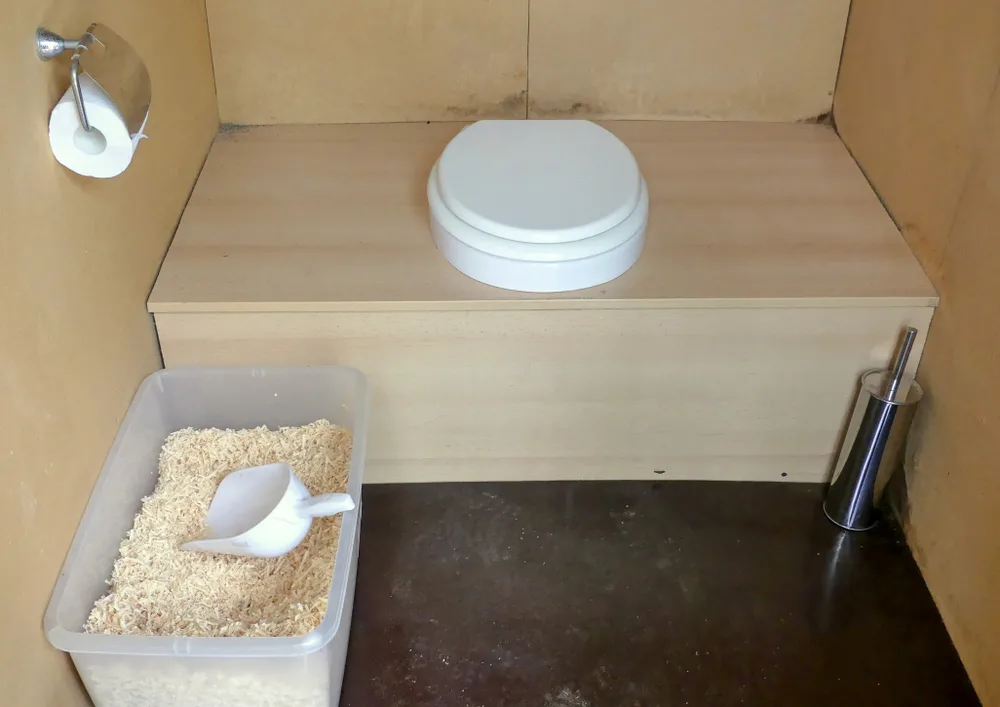
Once you have a working compost toilet system in place, you will also need to find good cover material that keeps odors in check.
There are pre-packaged compost toilet cover materials you can buy online, though you can always make your own for a fraction of the price. In this way avoiding materials that come from far away, such as peat moss.
If it can be harvested sustainably and it is local, by all means use it in combination with other materials, but if it comes from thousands of miles away, forget about it and try something else.
Cover materials for use in your compost toilet:
- sawdust or wood shavings
- chopped straw
- hay
- freshly mowed grass clippings
- dry leaves
- wood ash
- chopped hemp fibers
- pine needles
There are pros and cons for each compost toilet cover material, though the best solution for you is usually the one that you can harvest locally and that you don’t mind returning back to your garden in the form of compost.
In the end, it is really all about balance. Use a little bit of everything, even tossing in some dried aromatic herbs from time to time, after all it is a compost toilet, there is nothing to flush down the drain! Some rose petals perhaps…
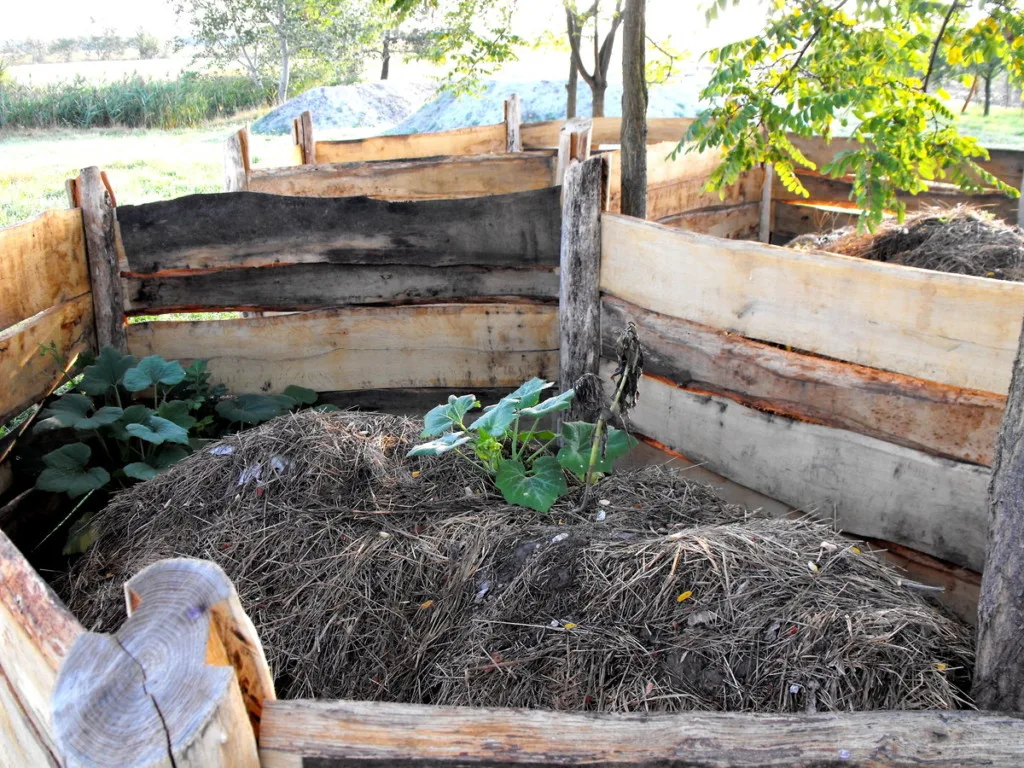
Composting your own humanure
When the first bucket is full, it is good to have a plan on what to do with the contents, because in the meantime the next bucket in line is being used. To say this is hard work, is simply unfair. It is work, though it can be enjoyable if you find a rhythm to it.
So what happens next, is that you will want to start composting your own manure, or humanure.
If you are completely serious about composting your own poop (and you should be!), I highly recommend to read the Humanure Handbook as you get started with your 3-compartment compost bin.
Here is what our humanure compost bin looked like when it was originally built.
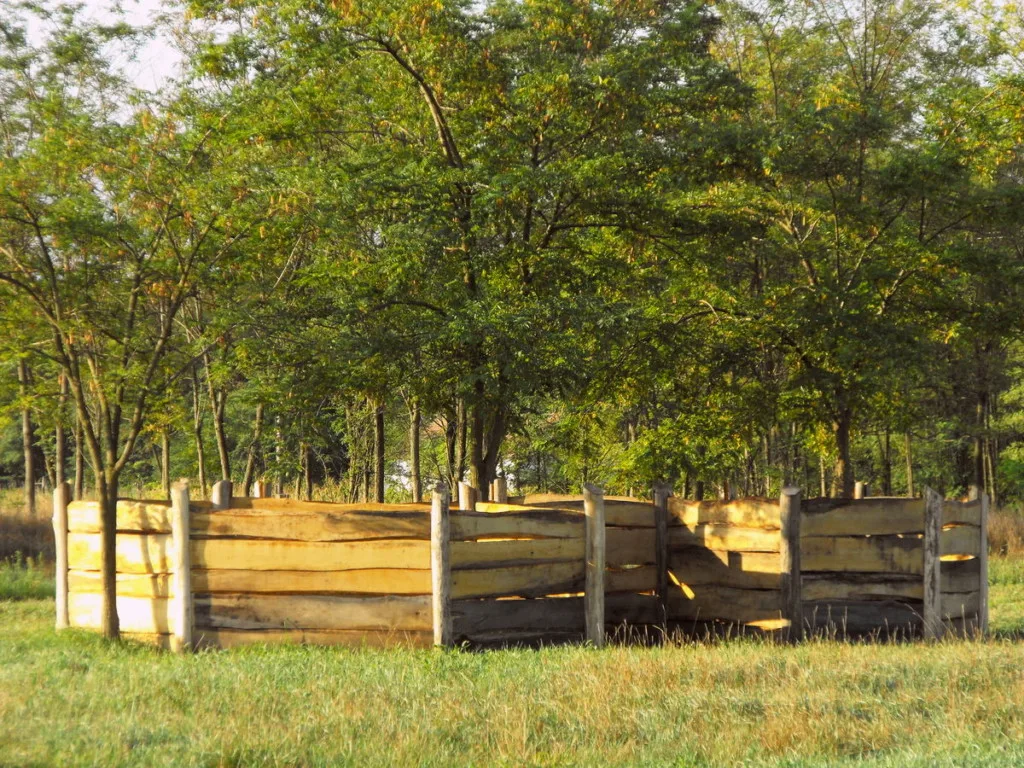
Notice the trees that were left in place to provide shade in the hottest part of summer, preventing the compost from needing additional moisture.
Just as a reminder, for thousands of years, people have applied night soil to the land to increase their yields. Not only is this bad practice in terms of water contamination, it can cause pollution and spread disease too.
That is why our manure, just like the manure of other farm animals should always be composted first, before use in/on any agricultural land.
Once you have created your own compost bin, place large amounts of natural, organic material in the bottom. Now you are ready for dumping the contents of your buckets atop this soaking bed.
Adding to the humanure compost pile
With each bucket added to the compost pile, be sure to cover it with even more organic material. This is to prevent smells from escaping and flies carrying potential pathogens back to your house.
This bring up the issue of placing your compost bin at an optimal distance from your home.
Use as little wet material as possible, as the contents will already be moist. Focus on covering it with dry hay, leaves, straw, etc. Ideally your cover is ready prepared for use in close proximity to the bin system – such as a heap of hay.
If you have problems with dogs, cats, or rodents in your area, make sure to build a lid of sorts for your bin as well. For some reason, they do like what you have to offer.
Mark the start of your composting toilet bin on a calendar, then be sure to switch to the next bin the following year. At the end of the first three years of collecting your waste, you will then be able to use the mature compost safely on the garden, much to the delight of your squashes, tomatoes and peas.
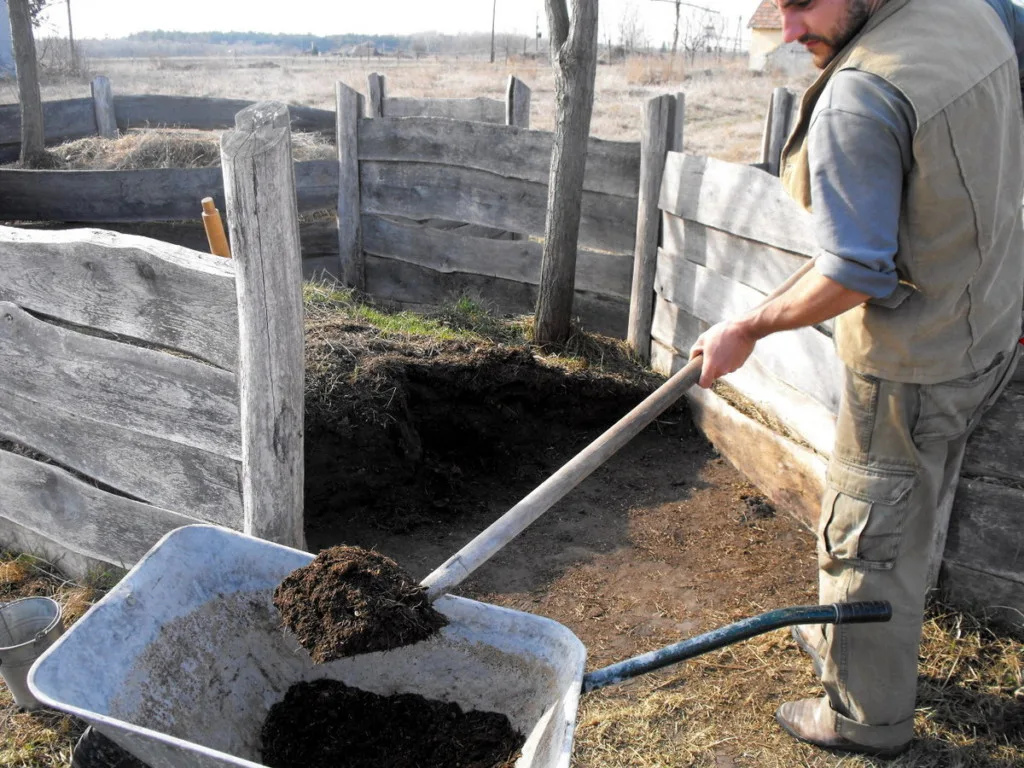
Now is the time to become a self-reliant homesteader, urban or rural, and set all squeamishness aside. Our ancestors managed life without running water or electricity, we can take our turn when necessary too!
Is humanure safe?
If you’ve read this far with an open mind, you are well on your way to installing your first compost toilet, at least in theory. But, you will likely still have a few more questions before jumping in.
Namely, is humanure safe to apply to my garden?
Or is it better for landscape trees only?
Let’s start off by saying that humanure can be seen as a threat to public health, as it may contain disease-causing organisms, so pathogens. Joe Jenkins, author of the Humanure Handbook, states that there are three basic rules of human excrement sanitation:
1) human excrement should not come into contact with water;
2) human excrement should not come into contact with soil;
3) you should always wash your hands after using a toilet or after adding toilet materials to a compost bin.
from the Humanure Handbook
An above-ground bin, or receptacle, elevates your compost pile, getting it out of the way of both children and certain animals. It also gives your compost pile access to plenty of oxygen – which will feed the organisms that break your poop down.
When done the right way, humanure is completely safe to use on both your vegetable garden, flower beds, landscape trees, shrubs, bushes and berry canes.
The trick is in knowing what to put in your compost (yes, food scraps are encouraged!) and what not to put in your bin, as well as allowing your compost to age until it is ready to be used.
When your humanure compost is ready to be applied to your garden, it should look and feel like moist garden soil. Naturally, it will be at least 2 years before your first batch is ready. In the first year you are collecting, the second and third year are for aging.
What not to put in your humanure compost bin
Next question on the list: can I compost dog poo?
Well, it depends. If you want to use your humanure on the garden, the answer is likely no. Dogs, as carnivores, are prone to having intestinal worms, including roundworms (eggs of which are not killed off by the heat of the compost pile).
Obviously, you will also want to refrain from throwing in any feminine hygienic products that contain plastic.
If you are downright picky about what goes on your garden, you may even want to consider what kind of toilet paper you use too.
As for food scraps, just about anything goes, though not everything will break down completely, including egg shells and large peach seeds.
Of course, you should avoid adding any kind of weed seeds altogether.
Related reading: 20 Common Composting Mistakes To Avoid
Potential risks of using humanure
Don’t let fecophobia scare you away from using a compost toilet.
Our poop is only as dirty, or toxic, as the way we treat it. If we drop it straight on the garden, that is not compost at all. Yet, if we age our humanure compost properly, we are simply engaging in the act of recycling nutrients – that are beneficial for the soil! And a free byproduct of existing in, on and with the land.
There is something to be said for letting medications enter our compost pile, which is an undertalked-about subject. For us, this could be construed as a potential risk. We personally do not take medications of any kind, and do not wish to compost urine or feces that do contain them.
If you do take medications, use your humanure at your discretion – mainly in the landscape, rather than in the garden.
You don’t have to take our word for it, when this chapter from the Humanure Handbook on Worms and Disease can quell your fears.
Additional compost toilet and humanure resources
To make an informed choice about composting human fecal waste – and to decide whether it is right for you, keep reading and gathering relevant knowledge:
Humanure Composting Basics @ Humanure Handbook
Humanure: The Next Frontier in Composting @ Modern Farmer
Holy Shit: Managing Manure to Save Mankind by Gene Logsdon

Get the famous Rural Sprout newsletter delivered to your inbox.
Including Sunday musings from our editor, Tracey, as well as “What’s Up Wednesday” our roundup of what’s in season and new article updates and alerts.

